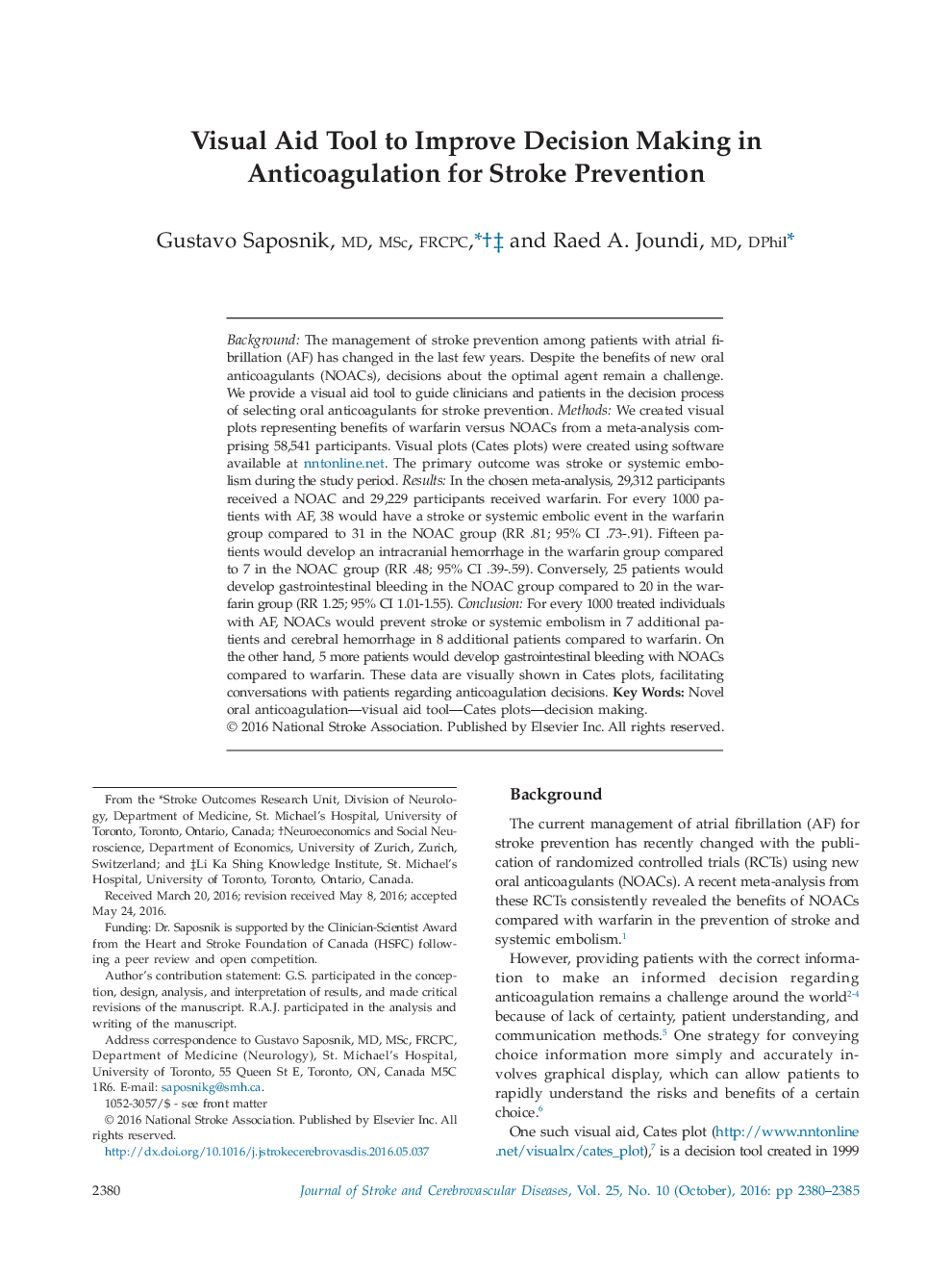| Article ID | Journal | Published Year | Pages | File Type |
|---|---|---|---|---|
| 2702109 | Journal of Stroke and Cerebrovascular Diseases | 2016 | 6 Pages |
BackgroundThe management of stroke prevention among patients with atrial fibrillation (AF) has changed in the last few years. Despite the benefits of new oral anticoagulants (NOACs), decisions about the optimal agent remain a challenge. We provide a visual aid tool to guide clinicians and patients in the decision process of selecting oral anticoagulants for stroke prevention.MethodsWe created visual plots representing benefits of warfarin versus NOACs from a meta-analysis comprising 58,541 participants. Visual plots (Cates plots) were created using software available at nntonline.net. The primary outcome was stroke or systemic embolism during the study period.ResultsIn the chosen meta-analysis, 29,312 participants received a NOAC and 29,229 participants received warfarin. For every 1000 patients with AF, 38 would have a stroke or systemic embolic event in the warfarin group compared to 31 in the NOAC group (RR .81; 95% CI .73-.91). Fifteen patients would develop an intracranial hemorrhage in the warfarin group compared to 7 in the NOAC group (RR .48; 95% CI .39-.59). Conversely, 25 patients would develop gastrointestinal bleeding in the NOAC group compared to 20 in the warfarin group (RR 1.25; 95% CI 1.01-1.55).ConclusionFor every 1000 treated individuals with AF, NOACs would prevent stroke or systemic embolism in 7 additional patients and cerebral hemorrhage in 8 additional patients compared to warfarin. On the other hand, 5 more patients would develop gastrointestinal bleeding with NOACs compared to warfarin. These data are visually shown in Cates plots, facilitating conversations with patients regarding anticoagulation decisions.
